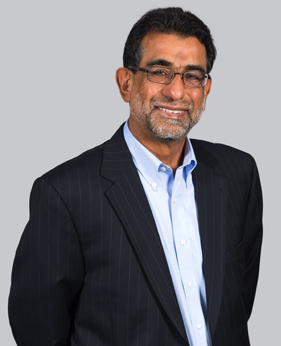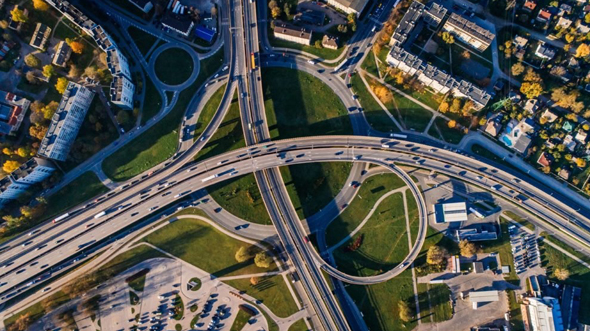
BLOG
—
The Geospatial Trends of 2019
Written by Dr. Qassim Abdullah, Chief Scientist, Woolpert Geospatial Services
Let’s talk trends—geospatial trends, that is. I’d like to revisit some of my trend predictions for 2018 and discuss the changes that I believe we will witness during 2019 and the years to come.
Big Data Needs Big Tools
Location-based applications such as smart buildings, infrastructure and utilities; self-driving automobiles; and crowd sourcing collect valuable location information around the clock. The more data that is collected, the more excited users grow. Big data can be used to create new GIS databases or update existing ones in real time, providing benefits to diverse sectors such as planning, construction, utilities, transportation, government and energy.
What’s lacking are the analytical and modeling tools needed to mine, extract and convert such information to knowledge. We are about to witness energized activities around the development of these tools, which surely will transform big data into something new and powerful.
Related industry news: Big Data Analytics: What it is and why it matters
Think Small—Miniaturized Sensors
High-tech, deep-bucket giants such as Apple, Google and LG have become increasingly interested in technologies used by the geospatial industry—much to the geospatial mapping community’s benefit. While lidar and advanced camera systems are among these technologies, they still need to be adapted (aka miniaturized) for use in smartphones, tablets or laptops.
In late 2018, Apple, Google and LG won patents for their versions of depth cameras that can interpret hand gestures to control features on smart devices. Specifically, Apple’s two patents use single photon avalanche diode (SPAD) arrays and vertical-cavity surface-emitting lasers (VCSEL) for real-time 3D imaging. This combination of lidar and VCSEL technologies has great applications in mixed-reality headsets, 3D sensing applications, gesture recognition systems, gaming, automobiles and robotics.
Related industry news: Major Apple Patents Reveal work on next-gen LiDAR Systems using VCSELs for 3D Sensing Systems and Headset
Living in the Cloud
We continue to witness impressive growth in high-performance computing networks, especially for those public and private agencies that are slowly transitioning their data processing and storage to the cloud. Cloud computing will grow exponentially as more software, data analytics and modeling companies migrate their tools to the cloud.
Public agencies and commercial data providers are rethinking and realigning their capital investment strategies as the cost of periodic upgrades for in-house computing and storage capacity soars. The prohibitive cost of upgrading such hardware every few years, the continuous need for maintenance, and concerns about data backup and security are making the choice of moving toward cloud-based architecture much easier.
Related Woolpert blog: The Sky’s the Limit for Cloud Computing
Lidar, Lidar, Everywhere
Lidar manufacturers continue to offer the industry huge technological advances, both in traditional linear-mode lidar and new technologies, such as Geiger mode and single photon. These advances translate to more efficient data acquisition and more affordable lidar data—good news for data users and national data warehouses such as the U.S. Geological Survey’s 3D Elevation Program (3DEP). Improved lidar data density, quality and accuracy opens new markets for lidar, especially within the engineering and 3D modeling sectors, and increases demand for the data.
Related Woolpert article: The Future of Aerial Lidar and Emerging Technologies
Marrying BIM to GIS
Building information modeling (BIM), virtual reality and augmented reality are becoming an integral part of the digital construction revolution. However, BIM and reality modeling cannot reach their full potential without intelligent GIS databases. Geographic and object attributes can add depth throughout the entire construction decision-making process. Together, GIS and BIM provide the design team and ordinary citizens alike with a more complete picture of a project and more spatial awareness about the design and construction life cycle. In the next few years, expect to see the heightened integration of BIM and GIS, bridged in part, by indoor and outdoor lidar scanning.
Related industry blog: How Virtual and Augmented Reality Will Impact the Future of Construction
A “Smart” Revolution
The upward trend of smart everything will continue through 2019 and the years to come. This revolution in networking is taking transportation and city managers by storm. Smart cities and intelligent transportation systems (ITS) are becoming necessities as technological advances offer better ways to manage facilities, roads and infrastructure. The geospatial community, along with the architecture and engineering industries, are poised to earn a substantial market share of the services needed to support the smart revolution.
Related Woolpert blog: ITS America 2018—Transforming Mobility for the 21st Century
Drone, Meet Lidar
The Federal Aviation Administration (FAA) recently amended its regulations to allow for the operation of small unmanned aircraft systems (UAS) in the National Airspace System. In collaboration with the geospatial industry, the FAA launched the Low Altitude Authorization and Notification Capability (LAANC) initiative, which creates opportunities to equip UAS with geospatial cameras and lidar sensors. As UAS-based imagery becomes more main-stream, UAS-based lidar will undoubtedly become a leading geospatial data collection method for small-sized projects.
Related Woolpert blog: Flying with the Big Boys at SAV
Mapping-as-a-Service (MaaS)
In my 2018 predictions, I highlighted the MaaS business model as one I expected to flourish. Speculated data acquisition, on-demand geospatial data and data subscription services will continue to experience steady growth in 2019. Although this business model is available for traditional imagery, lidar data subscription services are not yet established. I am hopeful that with the increased efficiency of today’s lidar systems, 2019 will see new market players offering lidar data subscription services.
Related industry article: Mapping as a Service
I can’t wait to see how this year’s trends play out.

Qassim A. Abdullah, Ph.D., PLS, CP
As Woolpert’s Chief Scientist, Qassim has more than 40 years of combined industrial, R&D and academic experience in analytical photogrammetry, digital remote sensing, and civil and surveying engineering. When he’s not presenting at geospatial conferences around the world, Qassim teaches photogrammetry and remote sensing courses at the University of Maryland and Penn State, authors a monthly column for the ASPRS journal PE&RS, and mentors R&D activities within woolpert_labs.


